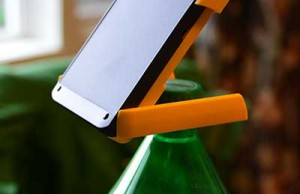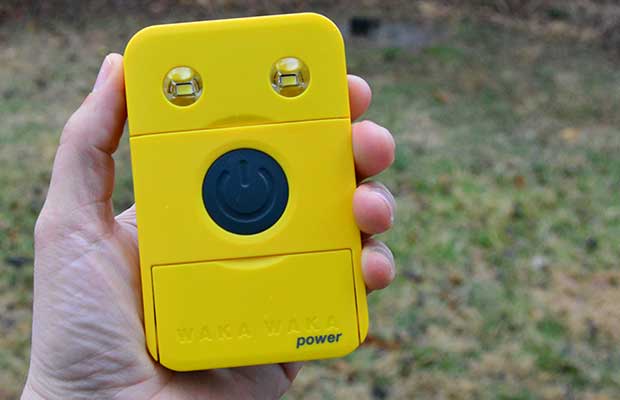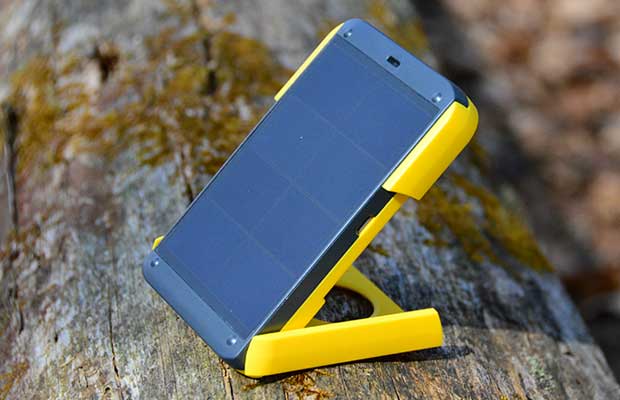Waka Waka Power: Review
Planning for power outages is one of the most common things you can do in the realm of prepping. To that end we talk about storing fuel, purchasing generators or inverters for back-up power or installing solar panels to augment your electric grid-tied system. These are the problems of anyone in the West normally who has reliable access to power. There is a whole other world out there where the reliability of constant power is spotty. In some remote locations, it is non-existent.
You don’t have to get your passport stamped to imagine life without power though. Winter storms, hurricanes, tornadoes, extreme heat all cause power outages here in the US too as I mentioned above. And, some people even willingly go far out into the woods for fun with, you guessed it. No power.
I was given an opportunity to review a product called WakaWaka Power which is essentially three devices in one. It is a solar charger, a battery and a very bright LED light. WakaWaka, Swahili for “shine bright”, is a creation of Off-Grid Solutions. Immediately apparent are the applications for this little device which gives you a long lasting LED light (up to 80 hours on a full charge at 25% power) and it can also charge your smart phone via USB. Something like this could really be a bonus even if you are stranded at an airport and don’t want to try and find the coveted spot on the floor next to the outlet for the lonely privilege of being able to stare at everyone’s feet for two hours while you answer email and wait for your phone to recharge.
The Waka Waka Power unit is pretty light at about 7 OZ so this could easily fit in your Get Home Bag or your Bug Out Bag if you don’t have other charging options. It probably weighs as much as a couple of packs of batteries and would last a lot longer provided you have a lot of access to sun. Assuming you could use a charger in place of batteries.
I have had my unit for a couple of weeks now and I have taken it outdoors a few times. The solar panels will charge through your window which is much easier during cold days, but the result is basically a trickle charge. For a good fast charge you want to have this right outside with direct and bright sun. This isn’t really a surprise, more of a known aspect of any solar powered equipment. You get the best results with direct sunlight and under full sun, the charging lights blink rapidly letting you know the Waka Waka is storing up power quickly.

 Hole in the base is perfect for mounting to a water bottle.
Hole in the base is perfect for mounting to a water bottle.
The Waka Waka Power takes 10 hours of full sunlight to charge according to the website. You could strap this to the back of your pack if you are hiking as long as you are always facing away from the sun. I was able to charge my iPhone pretty quickly with the Waka Waka even though it didn’t have a full charge and this could come in handy for business trips even as a backup battery. I know there are plenty of those already on the market, but not all have solar capacity and these super bright LED bulbs. The Waka Waka Power also uses a mini-USB that you have to supply to charge directly from the wall. This is faster than the sun, but would you believe that with all of the electric devices, I don’t have one single mini-USB plug?
The light bulbs have 4 different power settings. I assume these are 100%, 75%, 50% and so on so you can choose the amount of light you need. At 100%, these lights will easily brighten up an entire room so if you had to cook or you wanted to read, the Waka Waka would put off plenty of light. You could reduce the light down to 25% if you just needed to navigate to the bathroom or wanted to be romantic for instance and save power.
One nifty little feature was the hole on the base that fits over a plastic water bottle. You can use this as a stand or there is a small eyelet that you can run some paracord through to suspend the waka waka power from up higher. These are simple additions, but it does make the unit much better suited to be used for lighting.
 Waka Waka has two very bright LEDs
Waka Waka has two very bright LEDs
The idea behind WakaWaka Power isn’t necessarily new or revolutionary, but the goal of the organization is vast. The Waka Waka Foundation aims to eradicate energy poverty for over 1.5 billion people worldwide and that is no small feat. To that end, for every WakaWaka Power charger sold, WakaWaka makes a donation to the WakaWaka Foundation to finance entrepreneurial education, micro-loans to women energy entrepreneurs, and subsidies for the very poor in countries like in Nigeria, Haiti, Nepal, India and Latin America to replace polluting, dangerous kerosene lamps. These initiatives increase safety for girls and women at night, help students complete their homework after dark, and much more.
From a practical standpoint, I really like the Waka Waka power device and this follows a trend of bringing cleaner technology advances (rocket stoves, solar power) to remote regions to increase safety and improve health. I have other solar chargers, but they charge batteries separately and do not have a light. This could conceivably eliminate two things I needed to pack. I could take this on business trips for example instead of a headlamp, my charger and the spare batteries. I could make arguments on both sides, but this does give me options. The Waka Waka is pretty solid, but it isn’t waterproof so you don’t want to take this camping without a good dry sack to keep it in. If you don’t have any solar power charging capacity right now, you might want to try out the Waka Waka.
Planning for power outages is one of the most common things you can do in the realm of prepping. To that end we talk about storing fuel, purchasing generators or



